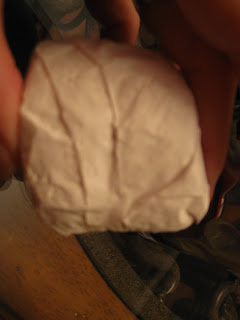The tests have been taken, the books have been read, the ground has been prepared, and the hives have been put in place. All we need are the honey bees.
For the past few months I've been preparing my hives and the space in my yard that they will sit. I used an orange oil/beeswax product to seal the outer wood against rain even though they are made of cedar. I like the look of the natural wood and didn't want them to grey. I didn't paint them because I didn't want to create another chore for myself.
I've located and prepared the optimal space in my backyard for my hives. Honey bees keep their hives at an even temperature, around 93 degrees. They do this in winter by huddling together around the brood and shivering. Those around the outside edge shift into the middle when they get cold. Very similar to the Emperor Penguin. In summer, worker bees continually fan their wings to keep the air circulating and the hive vented of extreme temperatures. The space I've chosen for my bees receives morning sun to help warm the hive and get the bees moving (they won't fly under temperatures of 50 degrees). The sun hits the hives again during mid-day and then receives shade in the late afternoon until a few hours before sunset when the sun hitting the hive will give warmth before the cool night air moves in. In this way I hope to assist the bees with the management of their hive in making their work lighter.
Another reason I chose this space is because it is protected from wind both in summer and winter. The only other requirement is that the space be level. Which as you can see I had to modify. So with some leftover base gravel and stone from another project I fashioned lovely platforms. The reason why you need level hives is so that the comb will hang straight off the bar. More on that in my next beekeeping blog post.
 |
| You can see that I had plenty of help on this project! The chickens had a heyday eating all the unearthed worms and bugs. |
The hive entrances face away from each other and the viewing windows both face each other so I don't have to move around too much while observing inside the hive. The whole idea of natural beekeeping is to be the least invasive to the hive as possible hence the viewing window. You can see what's going on in the hive without even opening it! (This is not the case with other hive design types) The hive roof rotates up from the window side so there is no lifting involved.
Placing the hives near a fence insures that the bees will fly up and over any nearby human traffic areas. Before the bees arrive the area will be planted with different types of lavender and the Magnolia tree in the left of the picture will be moved. A gravel path will be laid for access to the hives.
I love the tilt-up lid. That means I don't have to lift it off like other hive designs! The viewing window lets me observe the bees anytime without opening the hive and exposing the brood to varying temperatures. The three holes with screen mesh are for ventilation. If the bees do not want them they will fill them with propolis, an orange caulk-like substance that they make and use to caulk holes and cracks within the hive that they deem unnecessary.


I want my hives to be beautiful so I paid a little extra to have the roof covered in copper and I installed pretty garden themed tiles to the fronts.
My bee packages come on April 25th. Soon after I will be posting a video of me installing the package into the hive. Check back the first part of May to view this riveting procedure!
Placing the hives near a fence insures that the bees will fly up and over any nearby human traffic areas. Before the bees arrive the area will be planted with different types of lavender and the Magnolia tree in the left of the picture will be moved. A gravel path will be laid for access to the hives.
I love the tilt-up lid. That means I don't have to lift it off like other hive designs! The viewing window lets me observe the bees anytime without opening the hive and exposing the brood to varying temperatures. The three holes with screen mesh are for ventilation. If the bees do not want them they will fill them with propolis, an orange caulk-like substance that they make and use to caulk holes and cracks within the hive that they deem unnecessary.


I want my hives to be beautiful so I paid a little extra to have the roof covered in copper and I installed pretty garden themed tiles to the fronts.
These hives were bought from http://www.beethinking.com/ in Oregon. If you are handy and have the time, making your own is a snap. You can find simple instructions at http://www.biobees.com/build-a-beehive-free-plans.php along with other great information on natural top bar hive beekeeping.
My bee packages come on April 25th. Soon after I will be posting a video of me installing the package into the hive. Check back the first part of May to view this riveting procedure!












